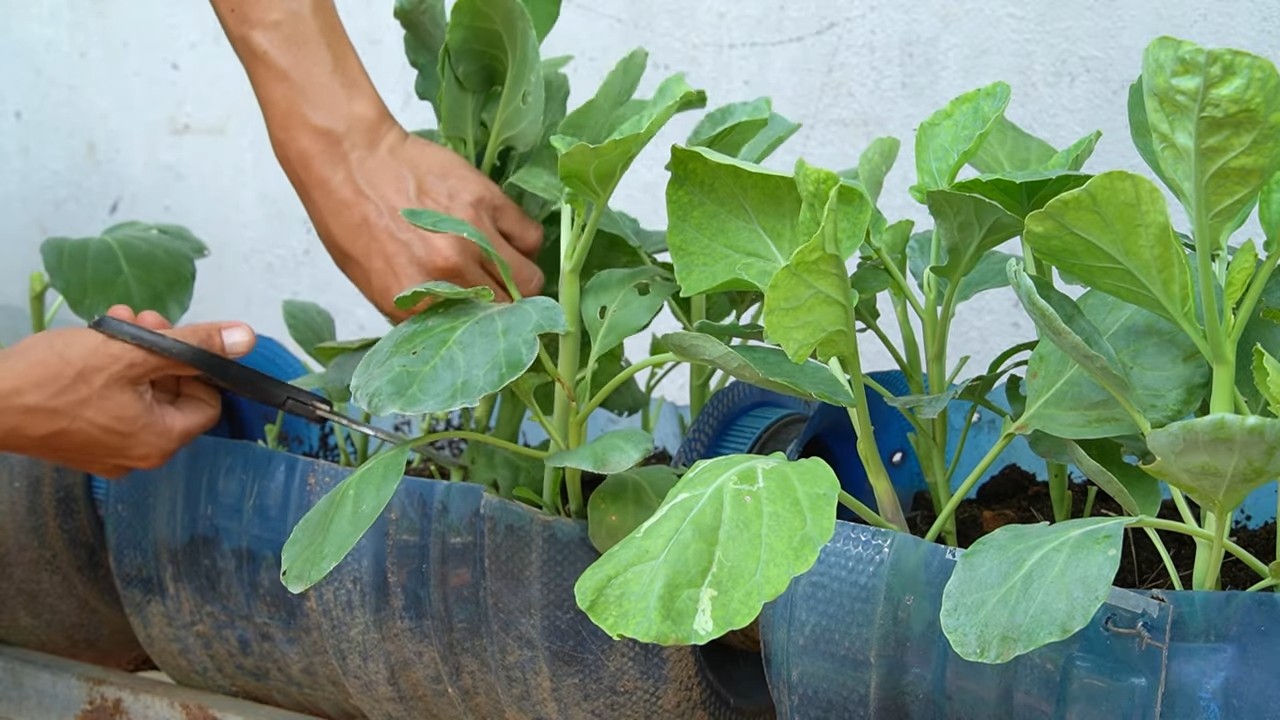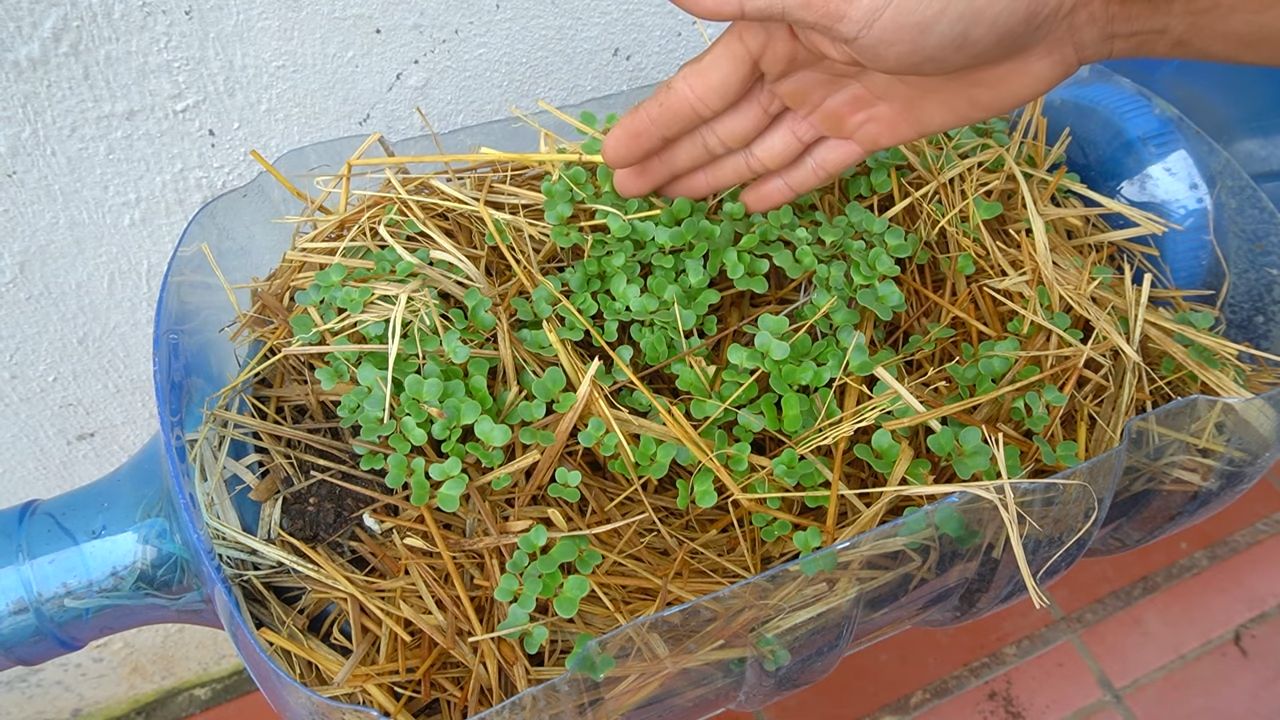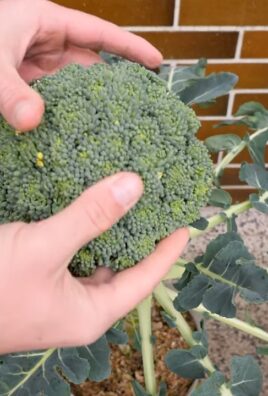Growing Collard Greens Tips: Unlock the secrets to a thriving, leafy harvest right in your own backyard! Have you ever dreamt of stepping outside and snipping fresh, vibrant greens for a delicious and nutritious meal? Well, dream no more! This DIY guide is your passport to collard green success, even if you’ve never held a trowel before.
Collard greens, a staple in Southern cuisine and a symbol of good luck and prosperity, boast a rich history dating back to ancient Greece. For generations, they’ve been a cornerstone of healthy eating, packed with vitamins and minerals. But let’s be honest, sometimes getting those perfect, tender leaves can feel like a challenge. That’s where these growing collard greens tips come in!
I know what you’re thinking: “Gardening is hard!” But trust me, with a few simple tricks and hacks, you can transform your garden into a collard green paradise. Whether you’re battling pests, struggling with soil conditions, or just unsure where to start, this article is your go-to resource. We’ll cover everything from seed selection to harvesting, ensuring you enjoy a bountiful crop of delicious collard greens. So, grab your gardening gloves, and let’s get started!

Growing Collard Greens: A Beginner’s Guide to Southern Comfort in Your Garden
Hey y’all! I’m so excited to share my tips and tricks for growing collard greens. These leafy greens are a staple in Southern cuisine, and trust me, nothing beats the flavor of homegrown collards. Plus, they’re surprisingly easy to grow, even if you’re a beginner gardener like I once was. So, grab your gardening gloves, and let’s get started!
Choosing the Right Collard Green Variety
First things first, let’s talk about varieties. There are tons of different collard green varieties out there, each with its own unique flavor and characteristics. Here are a few of my favorites:
* Georgia Southern: This is a classic variety, known for its large, slightly crumpled leaves and mild flavor. It’s a great all-around choice.
* Vates: Vates is a compact variety that’s perfect for smaller gardens. It’s also very cold-hardy, so it’s a good option if you live in a cooler climate.
* Champion: Champion is a fast-growing variety that produces tender, flavorful leaves. It’s a good choice if you’re looking for a quick harvest.
* Top Bunch: This variety is known for its high yield and disease resistance. It’s a great choice if you want a lot of collard greens with minimal effort.
* Blue Max: If you’re looking for something a little different, try Blue Max. It has beautiful blue-green leaves and a slightly sweeter flavor.
When choosing a variety, consider your climate, garden size, and personal preferences. Don’t be afraid to experiment with different varieties to find your favorite!
Preparing Your Garden Bed
Collard greens need a sunny spot with well-drained soil. They prefer a soil pH of 6.0 to 7.5. Here’s how I prepare my garden bed:
* Choose a Sunny Location: Collard greens need at least 6 hours of sunlight per day.
* Test Your Soil: Use a soil testing kit to determine the pH of your soil. You can find these kits at most garden centers.
* Amend the Soil: If your soil is too acidic (pH below 6.0), add lime to raise the pH. If your soil is too alkaline (pH above 7.5), add sulfur to lower the pH.
* Add Organic Matter: Incorporate plenty of compost or well-rotted manure into the soil to improve drainage and fertility. I usually add a few inches of compost to my garden bed before planting.
* Till the Soil: Till the soil to a depth of 6-8 inches to loosen it up and make it easier for the collard green roots to grow.
Planting Collard Greens
You can start collard greens from seed or transplant seedlings. I usually start mine from seed indoors about 6-8 weeks before the last frost.
Starting from Seed Indoors:
1. Sow the Seeds: Fill seed trays or small pots with seed-starting mix. Sow the seeds about 1/4 inch deep and gently water them.
2. Provide Light and Warmth: Place the seed trays or pots in a warm, sunny location or under grow lights. Keep the soil moist but not soggy.
3. Thin the Seedlings: Once the seedlings have emerged and have a few sets of true leaves, thin them out so that only one seedling remains in each cell or pot.
4. Harden Off the Seedlings: Before transplanting the seedlings outdoors, you’ll need to harden them off. This means gradually exposing them to outdoor conditions over a period of 7-10 days. Start by placing them in a sheltered location for a few hours each day, gradually increasing the amount of time they spend outdoors.
Direct Sowing Outdoors:
1. Prepare the Soil: Make sure the soil is loose, well-drained, and amended with compost.
2. Sow the Seeds: Sow the seeds about 1/2 inch deep and 1-2 inches apart in rows.
3. Water Gently: Water the seeds gently to avoid washing them away.
4. Thin the Seedlings: Once the seedlings have emerged and have a few sets of true leaves, thin them out so that they are spaced about 12-18 inches apart.
Transplanting Seedlings:
1. Dig Holes: Dig holes that are slightly larger than the root balls of the seedlings. Space the holes about 12-18 inches apart.
2. Remove Seedlings Carefully: Gently remove the seedlings from their pots or trays, being careful not to damage the roots.
3. Place Seedlings in Holes: Place the seedlings in the holes and backfill with soil.
4. Water Thoroughly: Water the seedlings thoroughly after planting.
Caring for Your Collard Greens
Once your collard greens are planted, it’s important to provide them with proper care to ensure a healthy and bountiful harvest.
* Watering: Collard greens need consistent moisture, especially during hot, dry weather. Water them deeply whenever the top inch of soil feels dry. I usually water mine every 2-3 days, depending on the weather.
* Fertilizing: Collard greens are heavy feeders, so they need regular fertilization. I like to use a balanced fertilizer, such as 10-10-10, every 4-6 weeks. You can also side-dress them with compost or well-rotted manure.
* Weeding: Keep your garden bed free of weeds, as they can compete with your collard greens for nutrients and water. I like to hand-pull weeds regularly or use a hoe to cultivate the soil.
* Mulching: Apply a layer of mulch around your collard greens to help retain moisture, suppress weeds, and regulate soil temperature. I usually use straw or shredded leaves as mulch.
* Pest Control: Collard greens can be susceptible to a few pests, such as cabbage worms, aphids, and flea beetles. I like to use organic pest control methods, such as hand-picking pests, using insecticidal soap, or applying Bacillus thuringiensis (Bt).
* Disease Control: Collard greens can also be susceptible to a few diseases, such as downy mildew and black rot. To prevent diseases, make sure to provide good air circulation, avoid overhead watering, and remove any infected leaves.
Harvesting Collard Greens
You can start harvesting collard greens when the leaves are about 6-8 inches long. Here’s how I harvest mine:
1. Choose the Outer Leaves: Select the outer, older leaves to harvest first. These leaves will be the largest and most mature.
2. Cut the Leaves: Use a sharp knife or scissors to cut the leaves off at the base of the plant.
3. Leave the Inner Leaves: Leave the inner, younger leaves to continue growing. This will allow you to harvest multiple times from the same plant.
4. Wash the Leaves: Wash the harvested leaves thoroughly to remove any dirt or debris.
Collard greens are best eaten fresh, but they can also be stored in the refrigerator for up to a week. To store them, wrap them in a damp paper towel and place them in a plastic bag.
Dealing with Common Problems
Even with the best care, you might encounter a few problems when growing collard greens. Here are some common issues and how to address them:
* Yellowing Leaves: Yellowing leaves can be a sign of nutrient deficiency, overwatering, or disease. Check the soil pH and nutrient levels, adjust your watering schedule, and inspect the plants for signs of disease.
* Holes in Leaves: Holes in leaves are often caused by pests, such as cabbage worms or flea beetles. Inspect the plants for pests and use appropriate pest control methods.
* Stunted Growth: Stunted growth can be caused by poor soil, lack of sunlight, or pest infestation. Amend the soil with compost, ensure the plants are getting enough sunlight, and control any pests.
* Bolting: Bolting (premature flowering) can occur when collard greens are exposed to hot weather or stress. To prevent bolting, plant collard greens in the spring or fall, provide them with consistent moisture, and protect them from extreme temperatures.
Enjoying Your Homegrown Collard Greens
Now for the best part – enjoying the fruits (or rather, leaves!) of your labor. There are countless ways to prepare collard greens. Here are a few of my favorite recipes:
* Southern-Style Collard Greens: This is a classic recipe that involves simmering collard greens with smoked ham hocks or bacon.
* Sautéed Collard Greens: This is a quick and easy way to prepare collard greens. Simply sauté them with garlic, olive oil, and a pinch of red pepper flakes.
* Collard Green Salad: This

Conclusion
So, there you have it! Mastering the art of growing collard greens doesn’t require a green thumb, just a little know-how and the right approach. We’ve explored practical tips and tricks that will transform your garden into a collard green haven. From selecting the perfect variety for your climate to understanding the nuances of soil preparation and pest control, you’re now equipped with the knowledge to cultivate a bountiful harvest.
But why is this DIY approach to growing collard greens a must-try? Because it empowers you to take control of your food source, ensuring you’re consuming fresh, nutritious greens free from harmful chemicals. Imagine the satisfaction of serving a delicious collard green dish made entirely from ingredients you nurtured yourself. The flavor is simply unmatched! Plus, it’s a sustainable and cost-effective way to enjoy this Southern staple.
Don’t be afraid to experiment with variations! Try companion planting with herbs like dill or chamomile to deter pests and enhance the flavor of your collard greens. Consider succession planting to ensure a continuous harvest throughout the growing season. You can also explore different cooking methods to discover your favorite way to enjoy your homegrown bounty. From classic Southern-style braised collard greens to innovative salads and smoothies, the possibilities are endless.
We wholeheartedly encourage you to try these tips for growing collard greens in your own garden. Don’t be intimidated by the process; it’s more rewarding than you might think. Start small, be patient, and learn from your experiences. And most importantly, share your journey with us! We’d love to hear about your successes, challenges, and creative variations. Post pictures of your thriving collard green plants, share your favorite recipes, and connect with fellow gardeners in the comments below. Let’s build a community of collard green enthusiasts!
Growing your own collard greens is not just about having fresh vegetables; it’s about connecting with nature, fostering a sense of accomplishment, and enjoying the simple pleasures of life. So, grab your gardening gloves, get your hands dirty, and embark on this exciting adventure. You’ll be amazed at what you can achieve!
Frequently Asked Questions (FAQ)
What is the best time of year to plant collard greens?
The best time to plant collard greens depends on your climate. In warmer regions with mild winters, you can plant them in the fall for a winter harvest. In colder regions, plant them in the spring after the last frost for a summer or fall harvest. Collard greens can tolerate light frosts, which can actually improve their flavor. For a continuous harvest, consider succession planting, sowing new seeds every few weeks.
How much sunlight do collard greens need?
Collard greens thrive in full sun, requiring at least 6 hours of direct sunlight per day. However, they can tolerate partial shade, especially in hotter climates. If you’re growing them indoors, provide them with supplemental lighting to ensure they receive adequate sunlight. Insufficient sunlight can result in leggy plants with poor leaf development.
What kind of soil is best for growing collard greens?
Collard greens prefer well-drained, fertile soil with a pH between 6.0 and 7.5. Amend your soil with compost or other organic matter to improve its drainage and fertility. A soil test can help you determine the pH and nutrient levels of your soil. If your soil is too acidic, add lime to raise the pH. If it’s too alkaline, add sulfur to lower the pH.
How often should I water my collard greens?
Water your collard greens regularly, especially during dry periods. Aim to keep the soil consistently moist but not waterlogged. Water deeply and less frequently, rather than shallowly and more often. Mulching around your plants can help retain moisture in the soil and suppress weeds. Check the soil moisture regularly by sticking your finger into the soil. If the top inch feels dry, it’s time to water.
What are some common pests and diseases that affect collard greens?
Common pests that affect collard greens include aphids, cabbage worms, flea beetles, and slugs. Diseases include black rot, downy mildew, and clubroot. To prevent pest and disease problems, practice good garden hygiene, such as removing plant debris and weeds. Use row covers to protect your plants from pests. Inspect your plants regularly for signs of pests or diseases and take action promptly. Organic pest control methods, such as insecticidal soap or neem oil, can be effective.
How do I harvest collard greens?
You can begin harvesting collard greens when the leaves are about 10-12 inches long. Harvest the outer leaves first, leaving the inner leaves to continue growing. This will allow you to harvest continuously throughout the growing season. Use a sharp knife or scissors to cut the leaves close to the stem. Wash the leaves thoroughly before cooking or storing them.
Can I grow collard greens in containers?
Yes, collard greens can be grown in containers. Choose a large container that is at least 12 inches deep and wide. Use a well-draining potting mix and provide your plants with adequate sunlight and water. Fertilize regularly with a balanced fertilizer. Container-grown collard greens may require more frequent watering than those grown in the ground.
How do I store collard greens after harvesting?
Store collard greens in the refrigerator in a plastic bag or container. They will keep for up to a week. Wash the leaves just before using them. You can also freeze collard greens for longer storage. Blanch the leaves in boiling water for 2-3 minutes, then plunge them into ice water to stop the cooking process. Drain the leaves well and pack them into freezer bags or containers.
What are some ways to cook collard greens?
Collard greens can be cooked in a variety of ways. They are often braised with ham hocks or bacon for a classic Southern dish. They can also be steamed, sautéed, or added to soups and stews. Collard greens are a good source of vitamins A, C, and K, as well as fiber and antioxidants. Experiment with different recipes and cooking methods to find your favorite way to enjoy this nutritious vegetable.
How can I improve the flavor of my collard greens?
The flavor of collard greens can be enhanced by adding ingredients such as smoked meats (ham hocks, bacon, smoked turkey), onions, garlic, vinegar, and hot sauce. Cooking them slowly over low heat will also help to develop their flavor. Some people also add a pinch of sugar or molasses to balance the bitterness. Don’t be afraid to experiment with different seasonings and flavor combinations to create your own unique collard green recipe.





Leave a Comment